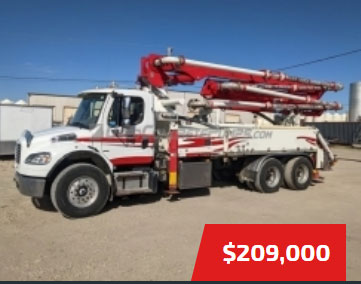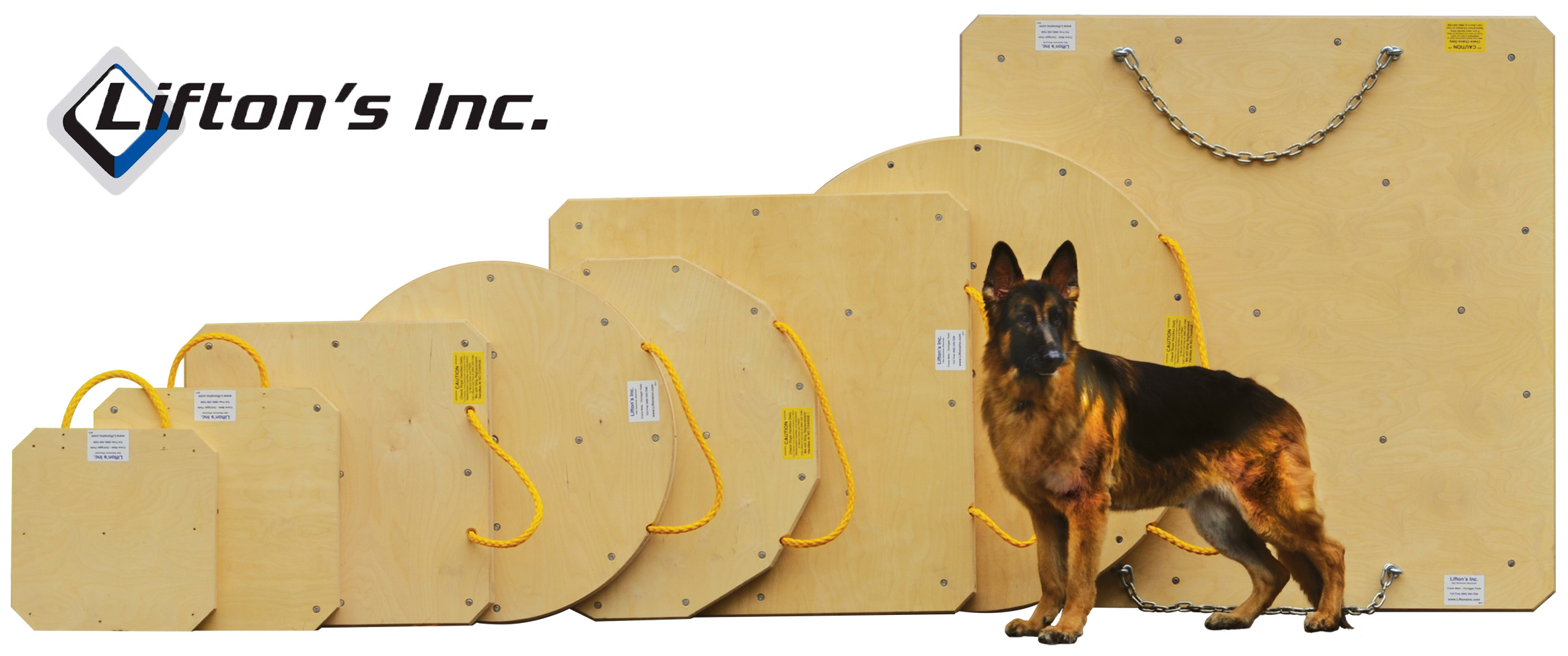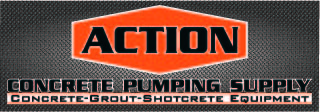| Dipstick | 03-10-2015 | comment profile send pm notify |
|
We did a test pour today with a new mix design that didn't go very well. We have some clues of what the problem might be but would like to hear some thoughts. System: Big linepump with 125 meters 5'' line, 5 tight radius 90 degrees at the end.. It is a mix that has very little water in it and loads of plasticizers. Its a light weight concrete called starlight. The rocks don't absorb any water. We are quite sure that's not the problem. To mannage the right weight and right strength we are right on the limit. LOADS of rock and very little water. But the large amount of core aggregate isn't the problem eighter.. At least we are not plugging on a rock-pack.. The harder we push the bigger the problems. What comes out of the end looks like it has a dry core with mostly sand and rock and all the cement juice is on the outside. We never had to open the line to losen any plugg though.. But we just couldn't pump faster than 5m3 hour.. or it would just ''plugg''. When we release the pressure and push again very gently it would flow again.. It reminds me a bit of the effect we used to have from Glenium but there is no Glenium in it. We use Dynamon SX-N as super plasticizer.. We think we have to use an other plactisizer but which one?? Or are we on the wrong path and could it be something else.. |
||
| Joe | 03-10-2015 | reply profile send pm notify |
|
Two things you can try one be a larger diameter of hose or pipe or you can throw a small box of laundry detergent in each load and mix for about 3 minutes |
||
| Dipstick | 03-10-2015 | reply profile send pm notify |
|
Thanks for the reply Joe! A larger hose is not an option. We have 5'' all the way and not planning to go to 6''
Detergent would be an option if we could proof on paper to the supervisor that it doesn't harm the concrete. We are building one of the largest cantilever bridges in the world so they don't want to take ANY risk with the strength of the concrete..
But I would apriciate it if you could tell us more of what you think is happening with the concrete. Any small detail could lead to a solution.. |
||
| pumpkid | 03-10-2015 | reply profile send pm notify |
|
Its not so much a plasticizer as a VMA you need a high range viscosity modifier. have used it to pump where there are no or low fines |
||
| Dipstick | 03-10-2015 | reply profile send pm notify |
|
That sounds like right.. Can you explain what a VMA is.. Language problem I think
Is that something they use for underwater concrete pouring also? |
||
| Dipstick | 03-10-2015 | reply profile send pm notify |
I just found a load of info on Internet.. This might just be the solution to our problem! But keep them ideas commin
|
||
| Dipstick | 03-11-2015 | reply profile send pm notify |
|
Its natural sand. 0-8mm (0'' - 5/16'') The core aggregat is max 16mm (5/8'') Its a kind of vulkanic rock, not very porous, soaked with water. Like I said, We don't think it absorbs any water from the concrete. These strange sausages that come out of the hose can easely be mixed to a normal concrete again with the same slump as when it went in to the pump.. |
||
| Pumpatude | 03-11-2015 | reply profile send pm notify |
|
use a pump with 5 inch cylinders (tk50) so there is no reduction in your delivery system. also VMA (vmar) is Gods gift to concrete pumping, i carry my own jug just for emergency |
||
| topgun | 03-12-2015 | reply profile send pm notify |
|
light weight concrete and plasticizer does not work period. it wont take the place of water. and if the rock is not soaked thru. all the moisture is absorbed when pressure is put on it. crack open the rock with a hammer and if its dry on the inside its not soaked well enuff. good luck to you |
||
| PUMBO | 03-13-2015 | reply profile send pm notify |
|
Sounds like the plug is definitely a bleed problem at the valve at higher velocity and increase in delivery pressure. Pumpatube has a point if the valve and spectacle plate is that of a big mouth perhaps the reduction is too great over a small distance for this particular mix design. If you getting slow volume without hassle maybee the solution may be a pump with smaller diameter inlet valve and spectacle plate to try keep the surface area of the valve and seal to a minimum. |
||
| Dipstick | 03-13-2015 | reply profile send pm notify |
|
That could be a good point there yes. But we can not go to much down in size. We also have a problem with the filling of the pumpcylinders. This is light weight concrete with LOADS of rock. When we pump to fast the rock packs and we kind of suck the juice out of the concrete which leaves us ith a hopper full of rock. We wil look in to it.. And we wil try the VMA.. That should help. |
||
| biged | 03-13-2015 | reply profile send pm notify |
|
Dipstick I never got into light weigh concrete but a good freind told me the best way to get water inside light weigh was the use of a vaccum chamber it pulls all the air out of the rock then when water is injected the rock will pull the water in,thats what I was told, just soaking it in water is not enough when you start pumping no more water thats in the mix under pressure it starts taking up what water there is that my two cents worth , You guys are the best in the world pumping concrete. |
||
| pumpkid | 03-14-2015 | reply profile send pm notify |
|
If you could get the mix des and a sieve on the agg i could look at it and tell you what would need to be done to pump it ?how many feet of line, ?temp of agg, ?Ambiient temp? sounds like the VMA will help but your building heat on the push harder you push more heat and acts like fales set with low water and high plasticizer your concrete will start forming set cystals in you line you might need some retarder to make things work. just remember water is are pipe lube and you to have some but then with friction you will have the slump loss that will be the water evaporation and the water/cement ratio will still be the same if you slump up a bit on a long push. Im a concrete pumper first and a readymix producer 2nd :) |
||
| Michael C | 03-16-2015 | reply profile send pm notify |
|
I did a 19 story highrise with lightweight concrete. It was also plasticized. We had to experiment a lot to get it to pump. We ended up adding water a bit at a time then the plasticizer. We ended up with a 4-5" slump and then plasticizing it to an 8-9 to get it to pump 19 stories. I also did another project that pored a lightweight material with 800ft of 5" line. It had a similar problem as yours. The result was an incompatibility with all the chemicals in the mud. It was a new mix design and went to total crap if bumper over 300ft. The ready mix changed the chemicals to come from the same company and it went better but not great. We could then pump it 500ft with out issue but still not good enough. Another project, a tunnel project, had an issue with micro fiber. The micro fiber was dosed at 3 times the manufacturer recommendation. We reduced the fiber and it went better. We could then pump the mix 500+ft instead of 200ft.
|
||
| Beast | 03-16-2015 | reply profile send pm notify |
|
air entrainment , whats your percentage ? |
||
| Beast | 03-16-2015 | reply profile send pm notify |
|
and what is happening is a type of segregation , more air entrainment will help with this , and if possible may want to back off the plasticizers some to get the slump down. |
||
| Dipstick | 03-16-2015 | reply profile send pm notify |
|
We have to have an air percentage of 3,5% +- 1%
Michael C. That doesn't sound good. So much work has been put in to this mix already. We need loads of rock to get the mud light enough Then there is the harding . They have to get a certain hardness after 2 days already. Water/cement factor is very little to do with.. Uff We where hoping we where about ready with al the experimenting but this sounds like we are only starting.. |
||
| Beast | 03-16-2015 | reply profile send pm notify |
|
usually if you can get 5% +- 1 it would help , If I am having segregation problems I alway increase air , but to me it actually sounds like the cement or flyash content coud go up 40 pounds a yard and this may solve all your problems , more rock =needing more cementuous material to be pumpable. |
||
| Dipstick | 03-16-2015 | reply profile send pm notify |
|
Yes but to go up with the cement or flyash will increase the weight I think? That might be a problem because they are right on the edge of getting it light enough. You know we are building one of the biggest cantilever bridges in the world. The supers are VERY strick with any detail... We might be able to do something with the air but not much.. 5% would be right on the edge of whats exaptable..
|
||
| SUPERDOFFER | 03-16-2015 | reply profile send pm notify |
|
the amount of cement is about 675 pound a yard. i don't think the amount of cement is the problem |
||
| Grandad | 03-17-2015 | reply profile send pm notify |
|
Time to go to 6 inch line and reduce down at your placer. i know its an extra cost but from what you are saying with no extra weight added to mix design and an air content of 4.5 max. Larger line which will slow the velocity of the concrete and provide you with the ability to speed up without the pressure problems. Use the nomograph in the manual it will help you |
||
| Dipstick | 03-17-2015 | reply profile send pm notify |
|
That doesn't sound to good. We will have a test pour on thursday. We are trying with the vma first. Lets see how that goes. We are now kind of in the mode of lets say: Its the concrete manufacturers problem. They prommised pumpable concrete.. But if we realy get stuck we could try to help... Thanks so much everyone for all the good advice!!!!!!!!!! |
||
| JoelDLong | 03-18-2015 | reply profile send pm notify |
|
Soak the aggregate pile at concrete plant the night before the pour with a sprinkler. Lightweight stone absorbs water big time. If it's not soaked, extra pumping pressure will force all your fluids into the stone. I've seen 4-5" of slump lost from mixer to end of line from this. Also, back the throttle down to roughly 1100 RPMS and bump your volume control up to increase pour rate if you're not already doing so, to hell keep the pressure/friction to a minimum in your system. .good luck!
|
||
| Pumpatude | 03-18-2015 | reply profile send pm notify |
|
Use a Putz Kattkreter with 5 inch barrels rated at 54 cu. per hour and add 16-20 ounces of VMA per cu. yd. = Smooth flow with no reduction in your delivery system & Prime with 3 x 80lb bags of masons mortar mix = problem solved |
||
| Dipstick | 03-19-2015 | reply profile send pm notify |
|
Pumpkid and every one else thanks so much for the input! We tried with the VMA today and it worked like magic! |
||
| Z-Boom_Parks | 03-20-2015 | reply profile send pm notify |
|
Not sure if this was mentioned but if the moisture of the concrete isnt at a min 80-90mm slump before SuperP then your gonna have a rough time... We have one project here that has a strict no water added rule, only SuperP, but the SuperP needs a certain amount of moisture to work properly just like everything else in your mixes. Is there any other additves being added to the mix, like calcium or corrosion inhibitor or Xypex? |
||
| Dipstick | 03-21-2015 | reply profile send pm notify |
|
I don't know so much about the mix actualy. Its been very hard to comunicate with this factory. Almost impossible to have a serious conversion with them. I think they are not so willing to give to much info. But they tried our sugestion and it worked so thats great. |
||
| Dipstick | 03-21-2015 | reply profile send pm notify |
|
Its quite strange actualy. Normaly on an extreme project like this all partys would work together to make it work. But on this project its a bit different. We have to cope with the concrete we get. Almost nothing can be done with it. We've had our share of problems. And like always the factory says it must be the pumps problem.This might be the most difficult project we will ever have. |
||
| biged | 03-22-2015 | reply profile send pm notify |
|
Dipstick you guys are not afraid to tackle anything I have to hand it to you. You all when to a lot of hard work building your pipe line, what if you would have had enough barges to build a floating concrete plant so you could have cut your long distance pumping in half. Anyway you guys are tops in my book GOOD WORK |
||
| Dipstick | 03-26-2015 | reply profile send pm notify |
|
O I get crazy. Now the test results of the lightweight concrete with VMA came in. The concrete they testet straight from the mixer has the right weight but the concrete we pumped is to heavy.. How on earth can pumping make concrete heavyer?? I have one theory.. The core aggregat wasn't completely soakt. (we saw that during the test pour by breaking some of it. It was dry inside) We pushed more moist in to the aggregate with the high pressure of the pump. They tested the weight only one day after the poor so maybe there is still moist in the aggregate. Maybe if we wait longer it will dry out and the weight will be the same. Anyone agree or anyone any other theory?? Help will be greatly apriciated |
||









 Can you give a good example of a high range viscosity modifier...
Can you give a good example of a high range viscosity modifier... This is what is so good about this site !
This is what is so good about this site !












.jpg)
.gif)

.jpg)









.jpg)








